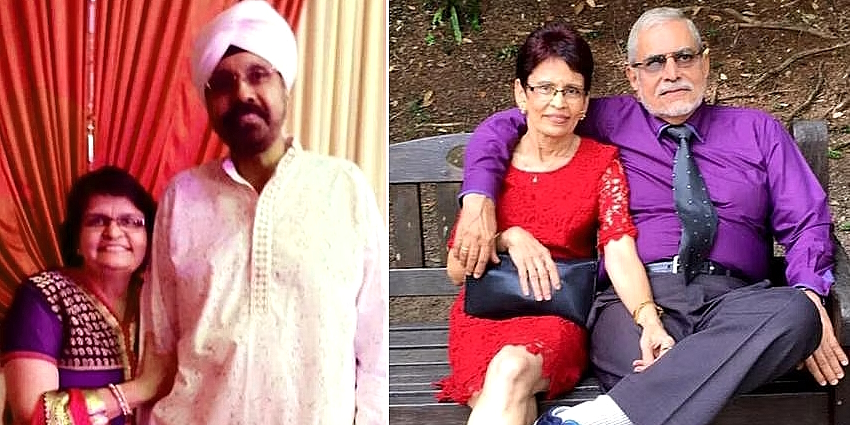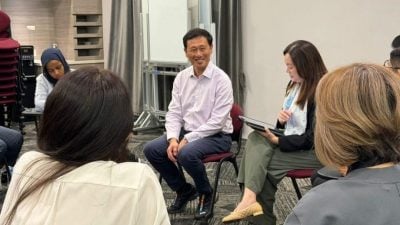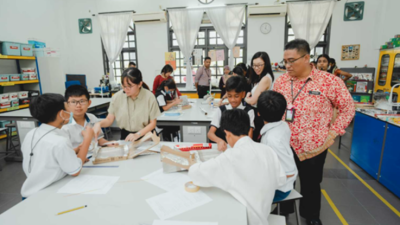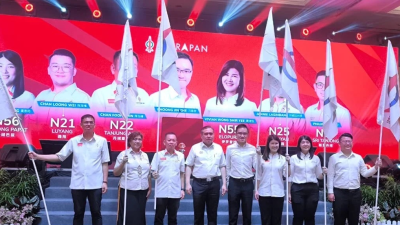
SINGAPORE: Friendship, love and marriage are not words typically associated with the Causeway, a vital piece of infrastructure that links Singapore and Malaysia’s southern Johor state, and which celebrates its centenary in 2024.
More often than not, the word “Causeway” evokes visions of massive crowds, tedious bumper-to-bumper traffic, and long queues of people headed to and from Johor Bahru city and the Republic to work, shop and eat.
But without the Johor-Singapore Causeway, generations of families might never have come into existence. The solid 1.056km stretch of granite and steel that connects Malaysia and Singapore has done more than bridge two nations – it has intertwined the destinies of numerous people.
For two sisters in Singapore in the 1970s and 1980s, Ms Viro and Ms Mito, the Causeway land link led to friendship, love and marriage.
Little did the two know then that the Causeway would be a huge part of their lives for the next five decades.
It all began when their late father, Mr Chanchal Singh, who cycled daily to work from their family home in Woodlands, Singapore, to Johor Bahru, struck up a close friendship with Mr Sucha Singh from Johor in the 1970s.
Friendship soon blossomed into kinship, as the families arranged a match between Mr Chanchal’s daughter, Ms Viro, and Mr Sucha’s son, Mr Kalbir. The wedding festivities in 1976 involved much merriment and high spirits on both sides of the border.
“If not for the Causeway, my husband and I would not be happily married today,” a smiling Mrs Singh, 71, told The Straits Times. The couple, who celebrate their 48th wedding anniversary in 2024, have three daughters, and four grandchildren aged 11 to 13.
After they married, the Causeway became a road well travelled for the Malaysian boy and the Singaporean girl, who shuttled back and forth to visit relatives and for work. For nine years, the couple lived in Johor Bahru, where Mr Kalbir worked, while Mrs Singh traversed the Causeway every day to the school where she taught in Singapore.
“Our journey across the then two-lane Causeway was smooth sailing. There used to be (far fewer) cars in the 1970s. Back in those days, it only took 20 minutes from my home in Johor Bahru to my workplace in Woodlands since there were no traffic jams like these days,” she reminisced.
And then it was Mr Kalbir’s turn to do the daily commute – in reverse – when the couple, with their three girls in tow, decided to move to Singapore in 1985 for the children’s education.
“For almost five decades, the Causeway gave us the freedom to work and live where we wanted, blending our lives across borders. We got the best of both worlds,” said Mrs Singh, who still teaches in Singapore, while Mr Kalbir is enjoying retirement.
Today, the Causeway is one of the busiest border crossings in the world, with 300,000 travellers daily. On weekends and public holidays, it can take as long as five hours to traverse the short distance between the two countries by road.
Crossing the Causeway was far simpler in the days before Singapore’s separation from Malaysia in 1965, with travel documents that enabled easy daily commutes and family visits, and facilitated personal connections.
“We used our identification cards for daily crossings between Singapore and Malaysia in the 1960s,” said Mrs Singh.
Then came the restricted passport, a separate blue passport specifically for travel between Singapore and West Malaysia, from 1967 to 1999. This came about as many Singaporeans would regularly travel to West Malaysia for social and business purposes. But from Jan 1, 2000, onwards, the red Singapore passport was considered the only valid travel document for overseas travel by Singapore citizens.
Likewise, Malaysians were issued a separate restricted passport for travel to Singapore, but this was discontinued in 2006, and only the regular international passport is in use.
A second story played out in somewhat similar fashion for Mrs Singh’s sibling.
Ms Mito met her Malaysian love, Dr Amrit Gill – who was her sister’s husband’s best friend – in 1983 at one of her family gatherings in the Republic. They were married a year later and settled down in Johor Bahru for their first five years as husband and wife.
Dr Gill, who frequently plied the Causeway during their courting days, said: “Without the Causeway, I wouldn’t have met my wife, whom I can’t live without. It also gave us our son, Charanpal, my pride and joy.”
The couple now reside in Seremban, in south-west Negeri Sembilan state, where Dr Gill runs a clinic with the help of his wife. In 2024, they will have been married for 40 years.
The most memorable ride of their lives was taking their newborn home to Johor Bahru from Singapore’s Kandang Kerbau Women’s and Children’s Hospital in 1985. Dr Gill was very excited about taking the baby home but was also very careful at the wheel because there were no car seats for babies in those days, said Mrs Gill, 73. Their son, now 39, lives in the UK.
The doctor’s trusty Ford Escort was later replaced by a classic Volvo, and for the next few decades, the family car chalked up plenty of mileage on countless trips back and forth to visit family and friends in Singapore.
“Every time we crossed the Causeway heading back to Johor, I was reminded that turning back to the Republic was always an option, especially since my son would cry non-stop until he fell asleep, never wanting to leave his cousins behind,” said Mrs Gill, who trained as a lawyer.
Today, the Causeway stands as a testament to the everyday rhythms of life and moments in time it has fostered over the years, mundane as well as momentous. It remains, at 100 years old, a bridge linking the past, the present and what is to come.
ADVERTISEMENT
ADVERTISEMENT








































